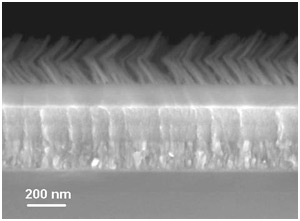Post Time:Nov 06,2008Classify:Glass QuotationView:801
The efficiency of solar panels in converting sunlight has always been somewhat a barrier to truly affordable solar power.
Solar panel glass reflects some of the light away and additionally, a typical solar cell only absorbs around two thirds of the sunlight it's exposed to, so much of the potential solar harvest is lost. Together, these issues contribute to an overall solar panel efficiency rate in the low to high teens.
Researchers at Rensselaer Polytechnic Institute have developed a new anti-reflective coating for solar panels that dramatically increases the amount of sunlight captured across the entire solar spectrum and from just about any angle. According to Shawn-Yu Lin, professor of physics at Rensselaer, a silicon surface was treated with the new nanoengineered reflective coating, absorbed an incredible 96.21 percent of sunlight shone upon it.

The new material also deals with the issue of the sun's angle in relation to the solar panel. Some solar arrays have automatic sun tracking devices to ensure the panel is at its most favourable angle in relation to the sun. Solar tracking equipment can boost electricity generation by up to 20%. Professor Lin's new material could do away with the need for such devices as the antireflective coating absorbs sunlight evenly and equally from all angles.
Most antireflective coatings transmit light of one particular wavelength. Lin’s development uses seven of these layers, each with a height of 50 nanometers to 100 nanometers, in a way that each layer enhances the antireflective properties of the layer below it.
Aside from general efficiency and affordability benefits in relation to solar power, as roof space becomes more valuable real estate, Professor Lin's development will mean that more solar energy can be generated from a smaller area which will be especially beneficial for home solar power system owners who usually have far less roof surface area to work with.
Source: Energy MattersAuthor: shangyi